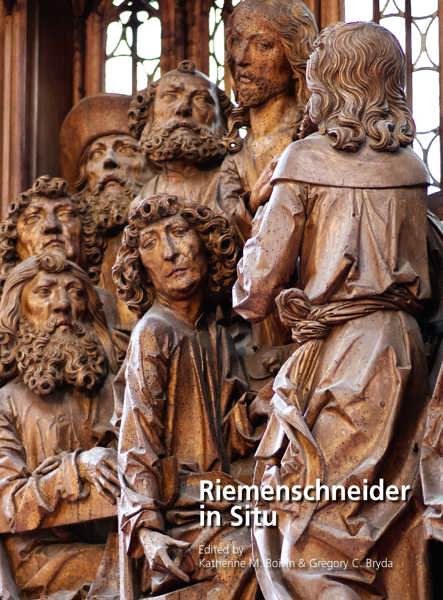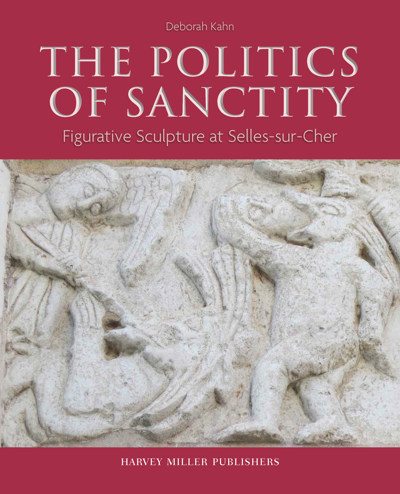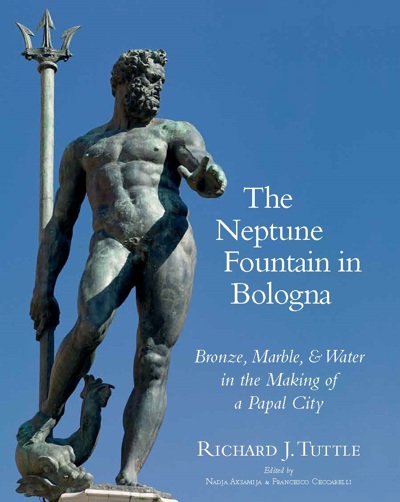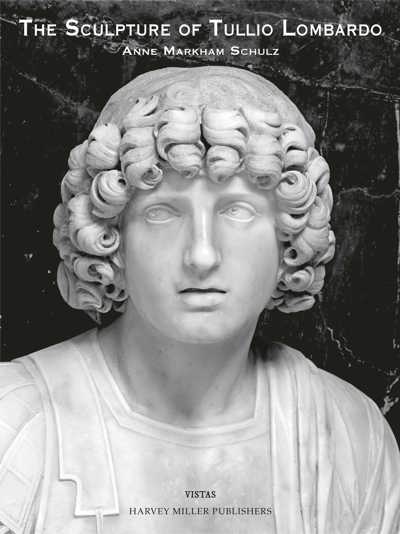
Taste and the Antique
The Lure of Classical Sculpture: 1500-1900. Revised and Amplified Edition
Adriano Aymonino, Eloisa Dodero, Nicholas Penny, Francis Haskell †
- Pages:3 vols, 1684 p.
- Size:220 x 280 mm
- Illustrations:186 b/w, 1592 col.
- Language(s):English
- Publication Year:2024
- € 395,00 EXCL. VAT RETAIL PRICE
- ISBN: 978-1-909400-25-2
- Hardback
- Available
Shortlisted for the Apollo book of the Year 2025
The book is indispensable for historians of taste, and to art historians concerned with the debt owed by numerous artists from the Renaissance onwards to the art of ancient Greece and Rome; and it is also of great value to students and collectors of the many surviving copies of the sculptures discussed.
"This new edition of Taste and the Antique triumphantly overcomes the one notable failure of the original. The two-volume catalogue illustrates all 95 works in magnificent colour, with the photographic images mostly by James Stevenson and Ken Jackson. (...) This is a glorious new edition, (...) it is a labour-saving miracle, and a luxurious compendium to the rich world of antique taste and replication." (Greg Sullivan, in The Art Newspaper, XXXIII, 38, May 2025, p. 62)
"...this beautifully illustrated and superbly executed edition has renewed the learning, relevance and allure of a true classic." (Tom Stammers, in Apollo, May 2025, p. 104)
"...the publication of a new edition of Taste and the Antique provides an opportunity to introduce it to an audience of archaeologists and specialists in classical art. (...) Taste and the Antique’s text and illustrations now provide a superb introduction to the sculpture; archival details shed light on its original placement and function, while details of its restoration help us to reimagine its now lost appearance. All of this is useful to archaeologists, students, and scholars alike." (Elizabeth Bartman, in American Journal of Archaeology, 129/4, 2025)
"As a totality, this illustrated edition aspires to a glorious presentation of the history of ancient statuary in Rome between 1500–1900 in a splendid format that can adorn a bookshelf as a magnificent reference tool. (...) It offers more than a monument to scholarship because it leaves the reader asking comparative questions about different eras (as does Penny himself in the preface), reflecting on the fate of this sculpture in the 20th c., and wondering how digital applications will change it in the 21st c." (Julia Lenaghan, in Bryn Mawr Classical Review, August 2025)
"(...) the magnificence of the presentation, the rich and innovative third volume and the immense value to scholars of the expanded bibliography mean that this important project can still claim its central position in the literature." (Clare Hornsby, in The Burlington Magazine, 167, 2025, p. 1148)
When Taste and the Antique was published in 1981, Francis Haskell (1928-2000) was established as one of the most influential historians of art, not only in the English-speaking world but throughout Europe, chiefly on account of his first book, Patrons and Painters (1963), a highly original account of Baroque art in Italy. Since his appointment as professor of art history in Oxford in 1967, he had turned his attention from Italy in the seventeenth and eighteenth centuries to France in the eighteenth and nineteenth, and had begun his investigations of collecting, historiography, and the role of the museum and of the art critic, eventually published as Rediscoveries in Art (1976) and Past and Present in Art and Taste (1987). Taste and the Antique identified the models for art education and criticism during the four centuries with which Haskell was chiefly preoccupied, providing a series of individual case studies for the works upon which orthodox taste was founded. The book had a central place in his oeuvre, prompting preoccupations which persist in the last book that he published in his lifetime, History and Its Images (1993), as well as in The Emphemeral Museum, published posthumously in 2000.
When he began to work with Francis Haskell on Taste and the Antique, Nicholas Penny was teaching art history at the University of Manchester. His first book, Church Monuments in Romantic England (1977), had attracted Haskell's attention and subsequently they discovered and developed many mutual interests. Penny went on to occupy curational positions in the Ashmolean Museum in Oxford, the National Gallery in London, and the National Gallery of Art in Washington, D.C. From 2008 to 2015 he was director of the National Gallery. He is now a visiting professor at the National Academy of Fine Art in Hangzhou. Among his other books are Raphael (1983), written with the late Roger Jones, and The Materials of Sculpture (1993), as well as catalogues of the sculpture in the Ashmolean Museum (3 volumes, 1992) and of the sixteenth-century Italian paintings in the National Gallery (2004, 2008, 2016). He is currently cataloguing the Italian paintings in the Norton Simon Museum in Pasadena, of which one volume was published in 2021 and the other, written with Imogen Tedbury, is approaching completion.
Adriano Aymonino is the director of the MA in Art Market, Provenance and History of Collecting at the University of Buckingham. He is the author of Paper Palaces (2013); Drawn from the Antique: Artists and the Classical Ideal (with Anne Varick Lauder, 2015); and, most recently, Enlightened Eclecticism. The Grand Design of the 1st Duke and Duchess of Northumberland (2021), winner of the 2022 William MB Berger Prize.
Eloisa Dodero is archaeological curator at the Capitoline Museums in Rome. She is the author of Il Tesoro di Antichità. Winckelmann e il Museo Capitolino nella Roma del Settecento (with Claudio Parisi Presicce, 2017); Ancient Marbles in Naples in the Eighteenth Century (2019); and co-author, with Amanda Claridge, of The Paper Museum of Cassiano dal Pozzo. Sarcophagi and other Reliefs (four volumes, 2022) and, within the same series, of Statues and Busts (2023).
For several hundred years, until about 1900, a limited number of antique sculptures were as much admired as are the Mona Lisa, Botticelli’s Birth of Venus or Michelangelo’s David today. They were reproduced in marble, bronze and lead, as plaster casts in academies and art schools, as porcelain figurines for chimneypieces and as cameos for bracelets and snuffboxes. They were celebrated by poets from Du Bellay and Marino to Byron and D’Annunzio, and memorably evoked by novelists as diverse as Marcel Proust and Nathaniel Hawthorne, George Eliot and Charles Dickens. Copies of some of these statues can be seen at Pavlosk and Madrid, at Stourhead, Charlottenburg, Malibu and Versailles, and in countless gardens, houses and museums throughout the world.
How and when did these particular sculptures achieve such a special status? Who were the collectors, restorers, dealers, artists, dilettanti, scholars and archaeologists who created their reputations? Under what names (often wildly fanciful) did they first become famous? How were they interpreted, and how and when and why did their glamour begin to wane? These are some of the problems that are confronted in Taste and the Antique.
Taste and the Antique has become a classic of art history since its original publication in 1981. This revised and amplified edition significantly updates the information based on new research undertaken in the last several decades, as well as expanding examples of the reception and influence of these works by artists and collectors from the Renaissance through to contemporary art.
The original edition has been expanded into three volumes:
Volume 1 is a revised and amplified version of the 1981 edition. Fifteen chapters trace in narrative form, with the support of a wide variety of plates, the rise and decline of this highly important episode in the history of taste. These chapters are followed by catalogue entries for 95 of the most celebrated sculptures, all of them illustrated, which provide information on when and where they were discovered, changes of ownership and nomenclature, as well as a record of varying critical fortunes designed to complement the more general discussion in the earlier chapters.
Volume 2 contains especially commissioned new photography of over 90 statues catalogued in Volume 1.
Volume 3 is entirely devoted to a visual survey of the full range of replicas and adaptations of the works catalogued and illustrated in the previous volumes.
The book is indispensable for historians of taste, and to art historians concerned with the debt owed by numerous artists from the Renaissance onwards to the art of ancient Greece and Rome; and it is also of great value to students and collectors of the many surviving copies of the sculptures discussed.
Volume I: Text
Preface to the Revised and Amplified Edition
An Updated Note on the Presentation of the Essay and Catalogue
Introduction
I. ‘A New Rome’
II. The Public and Private Collections of Rome
III. Plaster Casts and Prints
IV. Control and Codification
V. Casts and Copies in Seventeenth-Century Courts
VI. ‘Tout ce qu’il y a de beau en Italie’
VII. Erudite Interests
VIII. Florence: The Impact of the Tribuna
IX. Museums in Eighteenth-Century Rome
X. The New Importance of Naples
XI. The Proliferation of Casts and Copies
XII. New Fashions in the Copying of Antiquities
XIII. Reinterpretations of Antiquity
XIV. The Last Dispersals
XV. Epilogue
Notes to the Text
Updated Bibliography
Catalogue
Appendix
Bibliography
Index
Volume II: Originals
Volume III:Replicas and Adaptations








